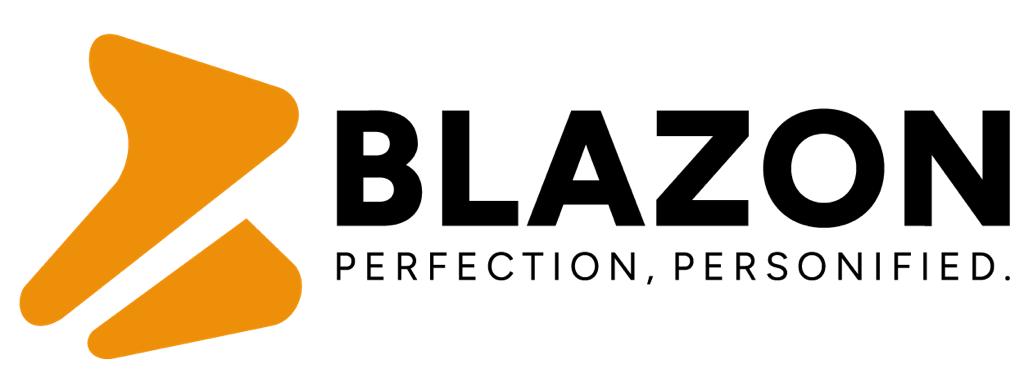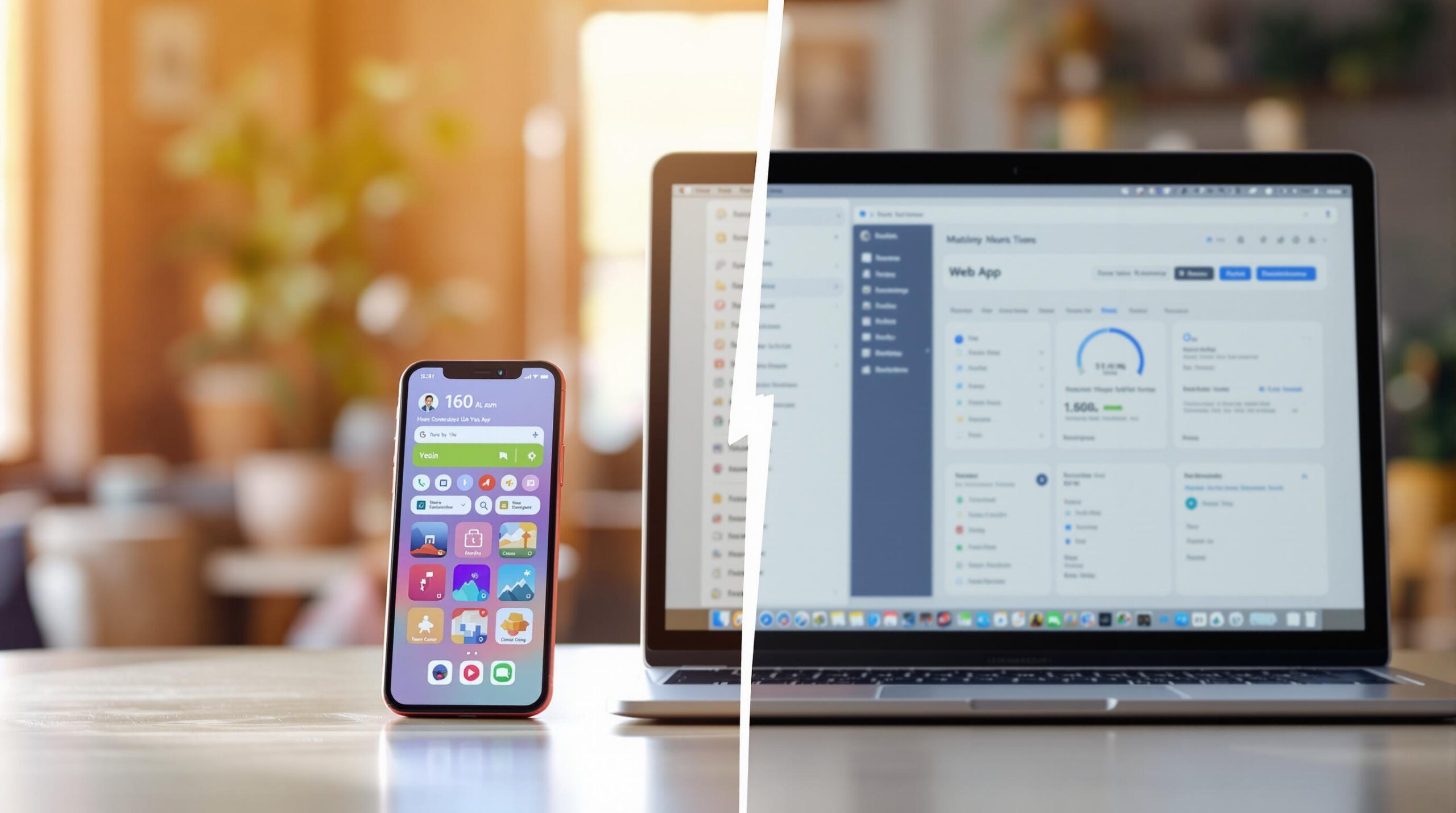Choosing between a mobile app and a web app depends on your business goals, budget, and audience preferences. Here’s a quick summary to help you decide:
- Mobile Apps: Best for advanced features (offline access, GPS, camera), long-term engagement, and high user retention. However, they require higher development costs (
₹8,25,000to₹28,87,500for basic apps) and separate versions for Android and iOS. - Web Apps: Ideal for cost-effective solutions (
₹12,37,500to₹82,50,000), universal accessibility, and faster deployment. They don’t need installation but have limited access to device features and rely on constant internet connectivity.
Quick Comparison
| Feature | Mobile Apps | Web Apps |
|---|---|---|
| Cost | Higher (₹16,50,000 to ₹2,06,25,000) |
Lower (₹4,12,500 to ₹41,25,000) |
| Platform | Separate apps for Android/iOS | Works on any browser |
| Updates | Manual updates via app stores | Automatic updates |
| Device Features | Full access (camera, GPS, etc.) | Limited access |
| Offline Access | Yes | Limited or none |
| Engagement | Higher (132 mins daily) | Lower (39 mins daily) |
| Development Time | Longer | Shorter |
Key Takeaway:
Choose a mobile app for advanced features and long-term engagement. Opt for a web app if you need a cost-effective, fast-to-market solution. Consider Progressive Web Apps (PWAs) as a middle ground – they combine the accessibility of web apps with app-like functionality but have some limitations (e.g., battery drain, restricted hardware access).
Web App vs Mobile App vs Desktop App – Which Is Right for …
Mobile Apps vs Web Apps: Basic Concepts
Let’s explore how mobile and web apps work and their distinct features, with examples tailored to India.
Mobile Apps Explained
Mobile apps are specifically designed for smartphones and tablets. They are downloaded and installed directly from app stores like the Google Play Store or Apple App Store, making them a popular choice for India’s large and diverse user base.
These apps are developed using platform-specific tools and programming languages. For example, Flipkart‘s mobile app provides a smooth shopping experience by using device features like push notifications and GPS. Similarly, WhatsApp uses native app capabilities to access the device’s camera, contacts, and local storage, enabling features like media sharing, voice calls, and efficient chat history management.
Web Apps Explained
Web apps run entirely through web browsers and do not require installation. This makes them accessible on various devices and platforms. A well-known example is Microsoft 365, which allows users to work on Word, Excel, and PowerPoint through any browser without downloading software.
Web apps are especially useful for businesses looking to reach a diverse audience. For instance, Google Docs showcases how web apps support real-time collaboration across devices. This is particularly beneficial for India’s growing remote workforce, as users can access their documents from any browser.
One major advantage of web apps is their automatic updates. Unlike mobile apps, which require manual updates through app stores, web apps update themselves without user involvement. This ensures everyone has access to the latest version, simplifying maintenance and improving the user experience.
Key differences between mobile and web apps are summarised below:
| Feature | Mobile Apps | Web Apps |
|---|---|---|
| Installation | Requires download from app stores | No download needed |
| Platform Compatibility | Built for specific platforms (Android/iOS) | Works on any device with a browser |
| Updates | Manual updates via app stores | Automatic updates |
| Offline Access | Available | Limited or unavailable |
| Device Feature Access | Full access (camera, GPS, etc.) | Limited access |
| Development Cost | Higher (separate code for each platform) | Lower (single codebase) |
This comparison shows why businesses often start with web apps, especially when aiming to reach a wide audience that may prefer not to install new applications.
Main Differences Between Apps
User Experience Features
Mobile apps make the most of built-in device features like cameras, GPS, and payment systems to create engaging, interactive experiences. Their ability to leverage native functionalities sets them apart. On the other hand, web apps focus on ease of access. They don’t require downloads and work seamlessly across platforms, making them convenient for users. This focus on accessibility shapes how they are developed and maintained.
Cost and Upkeep
Developing mobile apps means building separate versions for iOS and Android, which can drive up costs for both development and maintenance. Web apps, however, run on a single codebase and often include automated updates, keeping expenses lower. For businesses in India looking to save on costs, hybrid frameworks like Flutter or React Native provide a good middle ground, offering performance close to native apps while simplifying development.
Growth and Market Reach
Scalability and user engagement are key factors beyond just cost. For instance, Alibaba‘s Progressive Web App (PWA) led to a 76% boost in conversions across browsers, with active users increasing by 14% on iOS and 30% on Android. Similarly, Nikkei saw a 49% rise in active users and doubled page views per session after adopting PWAs. While mobile apps often require users to make a commitment by downloading them, they tend to have better retention rates. In 2023, over 59% of U.S. app users contributed to nearly 10 million downloads across major app stores.
Speed and Security Features
PWAs are known for their performance improvements. A clothing retailer in the UK saw load times improve by eight times, bounce rates cut in half, and visitors staying 28% longer after switching to PWA technology. Mobile apps, on the other hand, excel in handling complex tasks and offer reliable offline access. They also provide robust security with features like device-level authentication and encrypted storage, making them perfect for industries like banking and healthcare. Web apps, while not as feature-rich, benefit from automated updates and strong server-side security, ensuring users always access the latest version.
When choosing between these options, it’s essential to consider both technical features and how they align with your business needs and budget.
sbb-itb-aa47676
Side-by-Side Comparison
Here’s a breakdown of key business factors for mobile and web apps. These differences directly influence development, upkeep, and user experience.
Feature Comparison Table
| Feature | Mobile Apps | Web Apps |
|---|---|---|
| Development Cost | ₹16,50,000 to ₹2,06,25,000 (for native apps) | ₹4,12,500 to ₹41,25,000 |
| Maintenance | 15-20% of development cost annually | Lower costs with updates applied directly |
| Platform Requirements | Separate versions for iOS (31.44% market share) and Android (67.72% market share) | One version works across all platforms |
| Device Features | Full access to camera, GPS, payment systems, and other native tools | Limited access to device hardware |
| User Experience | Advanced, interactive interfaces with complex features | Simpler interfaces relying on browser capabilities |
| Installation | Requires downloading from app stores | No download needed, accessed instantly via browser |
| Updates | Users must manually install updates | Updates happen automatically on the server side |
| Usage Time | Higher engagement – 132 minutes daily average on mobile | Lower engagement – 39 minutes daily average on desktop |
| Performance | Handles complex tasks efficiently | May struggle with heavy processing tasks |
| Internet Dependency | Can function offline with stored data | Needs a constant internet connection |
| Development Flexibility | Requires platform-specific coding | Platform-independent coding possible |
| Time to Market | Longer development timelines | Faster deployment achievable |
Mobile apps are ideal for delivering advanced features and keeping users engaged for longer. On the other hand, web apps are better suited for businesses prioritising cost savings, quicker updates, and universal accessibility. Your choice should align with your budget, desired features, and how you want users to interact with your product.
How to Choose the Right App
When deciding between a mobile app and a web app, focus on your budget, audience behaviour, required features, and how quickly you need to launch.
Budget Considerations
Your budget plays a big role. Mobile apps demand a higher upfront investment and ongoing maintenance. In contrast, web apps are usually a more affordable option.
Understanding User Behaviour
Look at how your audience interacts digitally. If they spend more time on mobile devices (as earlier statistics suggest), that could influence your choice.
Feature Requirements
Think about the specific features your app needs:
- Advanced Features: If you need offline access, camera use, or payment systems, mobile apps are often better.
- Basic Features: For simple content delivery or interaction, a web app might work just fine.
- Hardware Access: Mobile apps are better for features like GPS or sensor integration.
Your timeline and goals will also play a role in shaping your decision.
Speed to Market
Web apps can be deployed faster since updates happen server-side, avoiding the need for user downloads. This can streamline your entry into the market.
Here’s a quick comparison to help you decide:
| Choose Mobile App When | Choose Web App When |
|---|---|
| Your audience mainly uses smartphones | Users prefer accessing via browsers |
| Advanced features are needed | Basic functionality is enough |
| Offline access is important | A stable internet connection is available |
| You have a larger budget | You’re working with financial limitations |
| Long-term user engagement is a focus | Fast launch is a priority |
Considering Progressive Web Apps (PWAs)
PWAs offer a middle ground. They deliver a native app-like experience, cost less, and work across platforms. However, they can drain batteries faster and have limited access to some device hardware.
Development and Maintenance
Think about your team’s skills and resources:
- Web apps are easier to maintain, with platform-independent coding and updates handled on the server side.
- Mobile apps often require separate development for different platforms, and updates need to be downloaded through app stores.
Keep these factors in mind as you align your app strategy with your business goals.
Conclusion
Choosing between mobile and web apps depends on your business needs, available resources, and how your audience interacts with technology. In 2023, users spent an average of 4 hours and 30 minutes daily on mobile devices, highlighting the growing importance of mobile-first strategies.
Platform Choice and Its Impact
The platform you select directly influences your reach, functionality, and user experience. Web apps are accessible across multiple devices, while mobile apps offer more advanced features and a personalised experience. Your decision should align the platform’s strengths with your business goals.
Key Factors to Consider
- User Preferences: Determine if your audience leans towards browsing on the web or using a dedicated app.
- Technical Needs: Decide if features like offline access or hardware integration are essential.
- Budget and Resources: Account for development expenses and ongoing maintenance.
- Future Plans: Think about scalability and the potential for adding new features down the line.
Progressive Web Apps (PWAs) provide a hybrid solution, combining the feel of native apps with the accessibility of web apps. However, keep in mind their limitations, such as higher battery usage and restricted hardware access, when evaluating your options.
Ultimately, whether you go with a mobile app, web app, or PWA, ensure it aligns with your goals and serves your users effectively.


